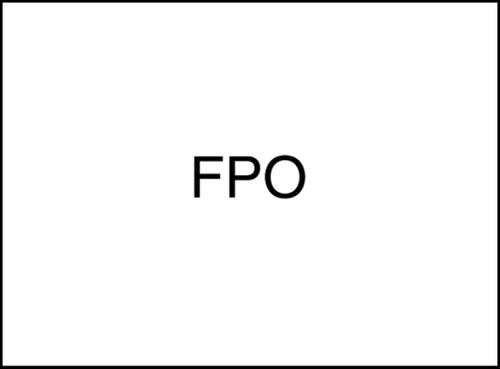Our official English website, www.x-mol.net, welcomes your feedback! (Note: you will need to create a separate account there.)
Changes in the transcriptional fingerprint of satellite glial cells following peripheral nerve injury.
Glia ( IF 6.2 ) Pub Date : 2020-02-11 , DOI: 10.1002/glia.23785 Sara E Jager 1, 2 , Lone T Pallesen 1 , Mette Richner 1 , Peter Harley 2 , Zoe Hore 2 , Stephen McMahon 2 , Franziska Denk 2 , Christian B Vaegter 1
Glia ( IF 6.2 ) Pub Date : 2020-02-11 , DOI: 10.1002/glia.23785 Sara E Jager 1, 2 , Lone T Pallesen 1 , Mette Richner 1 , Peter Harley 2 , Zoe Hore 2 , Stephen McMahon 2 , Franziska Denk 2 , Christian B Vaegter 1
Affiliation

|
Satellite glial cells (SGCs) are homeostatic cells enveloping the somata of peripheral sensory and autonomic neurons. A wide variety of neuronal stressors trigger activation of SGCs, contributing to, for example, neuropathic pain through modulation of neuronal activity. However, compared to neurons and other glial cells of the nervous system, SGCs have received modest scientific attention and very little is known about SGC biology, possibly due to the experimental challenges associated with studying them in vivo and in vitro. Utilizing a recently developed method to obtain SGC RNA from dorsal root ganglia (DRG), we took a systematic approach to characterize the SGC transcriptional fingerprint by using next-generation sequencing and, for the first time, obtain an overview of the SGC injury response. Our RNA sequencing data are easily accessible in supporting information in Excel format. They reveal that SGCs are enriched in genes related to the immune system and cell-to-cell communication. Analysis of SGC transcriptional changes in a nerve injury-paradigm reveal a differential response at 3 days versus 14 days postinjury, suggesting dynamic modulation of SGC function over time. Significant downregulation of several genes linked to cholesterol synthesis was observed at both time points. In contrast, regulation of gene clusters linked to the immune system (MHC protein complex and leukocyte migration) was mainly observed after 14 days. Finally, we demonstrate that, after nerve injury, macrophages are in closer physical proximity to both small and large DRG neurons, and that previously reported injury-induced proliferation of SGCs may, in fact, be proliferating macrophages.
中文翻译:

周围神经损伤后卫星神经胶质细胞转录指纹的变化。
卫星神经胶质细胞 (SGC) 是包裹外周感觉和自主神经元胞体的稳态细胞。各种各样的神经元压力源触发 SGC 的激活,例如通过调节神经元活动导致神经性疼痛。然而,与神经系统的神经元和其他神经胶质细胞相比,SGC 受到了适度的科学关注,并且对 SGC 生物学知之甚少,这可能是由于与体内和体外研究相关的实验挑战。利用最近开发的方法从背根神经节 (DRG) 中获取 SGC RNA,我们采用系统的方法通过使用下一代测序来表征 SGC 转录指纹,并首次获得 SGC 损伤反应的概述。我们的 RNA 测序数据可通过 Excel 格式的支持信息轻松访问。他们揭示了 SGC 富含与免疫系统和细胞间通讯相关的基因。神经损伤范式中 SGC 转录变化的分析揭示了损伤后 3 天和 14 天的不同反应,表明 SGC 功能随时间的动态调节。在两个时间点都观察到与胆固醇合成相关的几个基因的显着下调。相比之下,与免疫系统相关的基因簇(MHC 蛋白复合物和白细胞迁移)的调节主要在 14 天后观察到。最后,我们证明,在神经损伤后,巨噬细胞在物理上更接近小型和大型 DRG 神经元,而且先前报道的损伤诱导的 SGC 增殖实际上可能
更新日期:2020-02-11
中文翻译:

周围神经损伤后卫星神经胶质细胞转录指纹的变化。
卫星神经胶质细胞 (SGC) 是包裹外周感觉和自主神经元胞体的稳态细胞。各种各样的神经元压力源触发 SGC 的激活,例如通过调节神经元活动导致神经性疼痛。然而,与神经系统的神经元和其他神经胶质细胞相比,SGC 受到了适度的科学关注,并且对 SGC 生物学知之甚少,这可能是由于与体内和体外研究相关的实验挑战。利用最近开发的方法从背根神经节 (DRG) 中获取 SGC RNA,我们采用系统的方法通过使用下一代测序来表征 SGC 转录指纹,并首次获得 SGC 损伤反应的概述。我们的 RNA 测序数据可通过 Excel 格式的支持信息轻松访问。他们揭示了 SGC 富含与免疫系统和细胞间通讯相关的基因。神经损伤范式中 SGC 转录变化的分析揭示了损伤后 3 天和 14 天的不同反应,表明 SGC 功能随时间的动态调节。在两个时间点都观察到与胆固醇合成相关的几个基因的显着下调。相比之下,与免疫系统相关的基因簇(MHC 蛋白复合物和白细胞迁移)的调节主要在 14 天后观察到。最后,我们证明,在神经损伤后,巨噬细胞在物理上更接近小型和大型 DRG 神经元,而且先前报道的损伤诱导的 SGC 增殖实际上可能



























 京公网安备 11010802027423号
京公网安备 11010802027423号